Summer is officially here, and many people are struggling to stay cool as heat waves hit areas that don’t normally experience intense summer heat. Although modern home design is much more effective at keeping homes cool and comfortable than it once was, smart home technology can help keep your home even cooler. Through smart use of your devices, you can fight the heat and stay nice and cool even on the hottest days. Here’s how.
- Set a smart bed to cool down before you sleep
- Smart thermostats can adjust the temperature based on forecast
- UV sensors let smart blinds close automatically
- Use smart lights to set up extreme temperature alerts
- USB powered portable AC units can offer instant cool air
- Battery-powered fans are useful during a power outage
- Use Energy Dashboard to track your devices’ energy consumption
Set a smart bed to cool down before you sleep
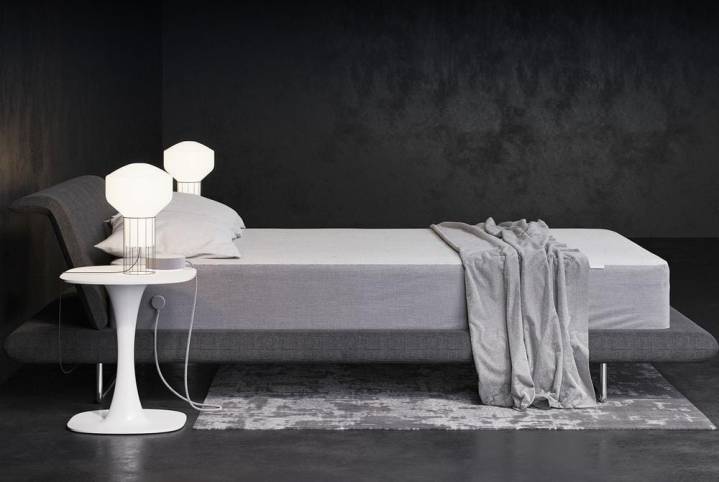
Sleep scientists suggest the best temperature for sleep is around 68 degrees. When it’s over 90 outside, reaching that temperature inside isn’t feasible without substantial energy bills. A smart bed can offer a better solution.
Take the EightSleep Pod Pro, for example. This is a mattress cover that pumps water throughout the bed to reduce (or increase) the temperature. You can schedule the bed to begin cooling automatically half an hour before you go to sleep if you have a regular bedtime. If you don’t, you can just activate the bed before you lie down.
If you’re worried it will interfere with your sleep, you can keep track of how long you stay in bed and how deeply you sleep thanks to built-in sensors within the mattress cover itself.
Smart thermostats can adjust the temperature based on forecast
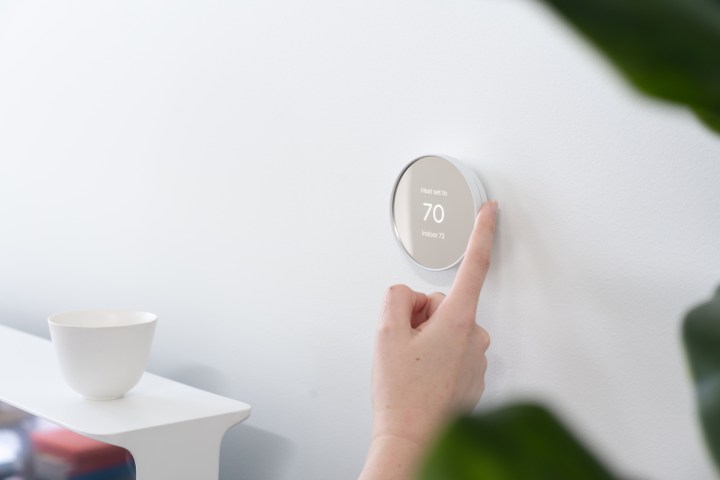
Smart, Internet-connected thermostats can begin cooling your home before the temperatures get too high. It takes more energy to cool an already-hot home than it does to keep temperature steady. Some smart thermostats even try to perform tasks that require more energy at times when energy costs will be lowest.
A smart thermostat also gives you the ability to control the thermostat remotely. This is perfect for when you’re away on vacation and you set your thermostat higher, but you want your home comfortable when you return. You can also track overall energy costs; for example, the Google Nest Thermostat claims to save as much as 15% on energy costs per year.
UV sensors let smart blinds close automatically
Have you ever wished your blinds could close automatically, maybe at a certain time of day or when the light hits a certain place in your home? Smart UV sensors can be installed throughout your home and linked to smart blinds through services like IFTTT. When sunlight hits the sensor, it sends a signal that tells your blinds to close.

This is useful for homes with large windows that let in a lot of light and heat. UV sensors can give you the best of both worlds — the view from the window as well as relief from the heat by closing the blinds on these windows when the sunlight reaches a certain level.
Use smart lights to set up extreme temperature alerts
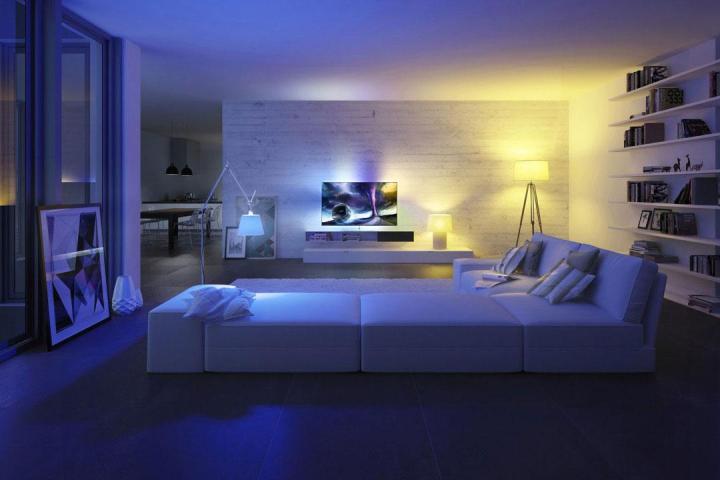
It’s important to know the weather conditions outside your home before you leave. Smart lights can give you a heads-up before you walk out the door. Just choose one light to act as an indicator of outside temperature — perhaps one in the entryway of your home.
You can use a service like IFTTT to set routines with smart lights like the Philips Hue light bulb. If the temperature outside is in the 70s, the light can be blue. If it’s in the 80s, you can make the light turn green. If it’s above 90, make the light turn red. These are all just examples, but it provides an easy way to get important information with a glance.
USB powered portable AC units can offer instant cool air
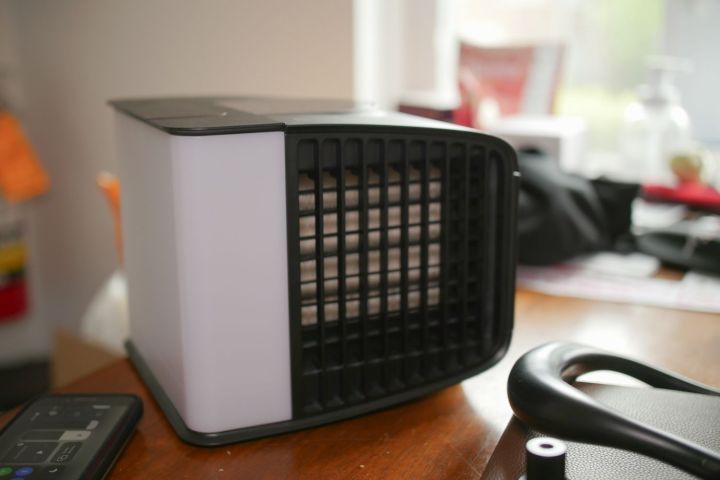
Some rooms in a home will always be warmer than others, either due to their location or the setup of the HVAC system. If you have a home office that always feels just a bit warmer than the rest of the house, consider investing in a portable air conditioning unit.
The evaSMART air conditioner can be plugged into the wall or through a power bank to provide immediate cooling to any space, regardless of size. It can also be controlled through an app or a voice assistant. If you’re feeling a bit warm during the day, just say, “Hey Alexa, turn on the air conditioner.”
Battery-powered fans are useful during a power outage
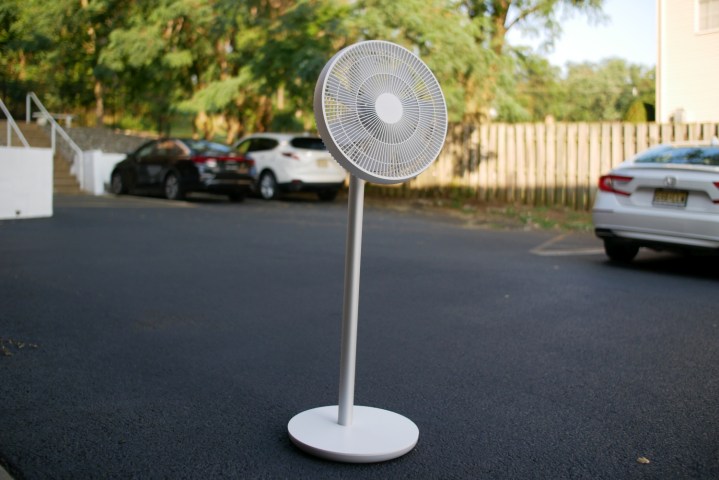
The hottest days of summer are often accompanied by power outages, especially as the grid becomes overloaded with too many people pulling too much power. On days when the power goes out and you’re stuck at home, a battery powered smart fan can help provide some relief from the heat.
The Xiaomi SmartMi 2S is a battery-powered smart fan that provides an impressive 20 hours of operation on a single charge. It will help keep the air flowing, something that’s really useful when you’re trying to sleep through those humid nights without power.
Use Energy Dashboard to track your devices’ energy consumption
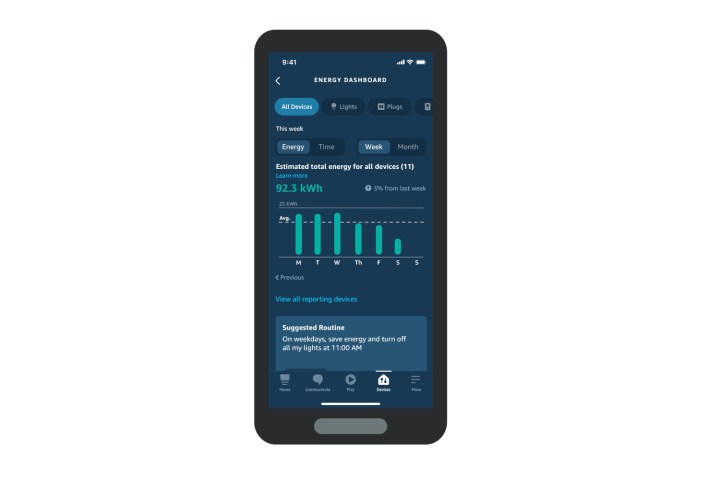
The Alexa Energy Dashboard shows you exactly how much energy is used by the devices in your home that are connected to Alexa. It displays daily, weekly, and monthly trends to give you an idea of how energy usage fluctuates.
The Alexa Energy Dashboard makes it easy to see how much energy your smart devices are using and allows you to gauge whether their energy consumption is worth the benefit they bring to your home. You can even access it directly on a smart display like the Amazon Echo Show 5 (2021).
As summer continues to ramp up, let your smart home technology fight the heat for you. With these tips and tricks, you can stay cool and comfortable no matter how hot it gets outside.
Editors' Recommendations
- SimpliSafe is now using AI to prevent burglars from entering your home
- Home Depot’s Hubspace is a great way to start building your smart home
- The Ring Battery Doorbell Pro offers premium features without the need for cumbersome wires
- Daisy is an installation and repair company designed for your smart home
- Pawport brings security (and smarts) to your existing pet door




